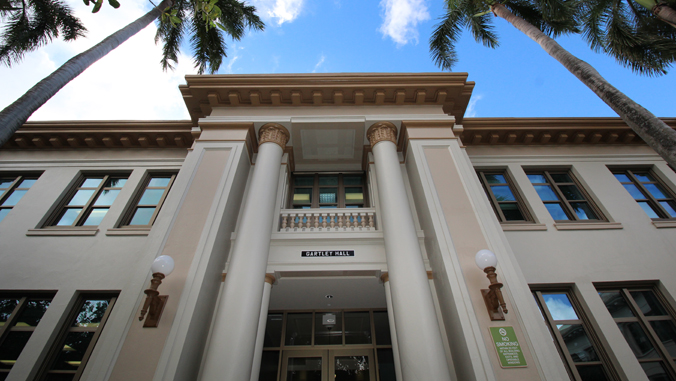
Women make up nearly two-fifths of the global workforce, but have suffered more than half of total job losses due to COVID-19, according to an expansive study on women by University of Hawaiʻi at Mānoa researchers at Thompson School of Social Work & Public Health. The study utilized life course, age and gender research to provide new information regarding work-life balance policies, which could impact women's employment and economic security in later life.
Associate Professor Jing Guo and Professor Emerita Colette Browne, both of the Department of Social Work, examined the patterns of women's employment over women's lifespan in Japan, Sweden and the U.S. Differences emerged in work-life balance policies and social norms on gender roles.
Patterns, differences in inequality
Using the Organisation for Economic Co-operation and Development (OECD) and other large data sets, Guo and Browne found there was a consistent pattern of women's employment across the three countries. Employment gaps were highest during a women's childbearing and childrearing years. Differences included Sweden's universal family policies which resulted in higher female employment rates and a lower gender gap, in contrast to the U.S. and Japan, both of which had lower female employment rates and a higher gender gap. The U.S. had the largest gender poverty gap among the three countries coupled with older women in the U.S. facing a greater risk of poverty.
"Women's economic status is often tied to the unequal distribution of family and care responsibilities occurring across the life course. Improving access to quality, affordable child care—and eldercare—has been essential to women's progress. Equally important is for workplace norms, policies and structures to change so that both women and men are enabled to access child and/or elder care services without career risk and stigma. Changing mindsets around gender roles and worker rights will require protocols and policies that not only understand the challenges to women's equality, but commit to cultural, political and legal strategies to overcome them." Guo said.
Browne added, "In the U.S., it may be too soon to know if COVID-19 will be a catalyst for promoting new work-life balance policies. Nations can support women's immediate economic needs via policies such as work-life balance policies but must also commit to longer term strategies for creating stronger systems, policies and institutions that reflect women's diverse experiences and ages. As the World Bank, the OECD, and other global institutions have noted, smart nations and companies that understand this will prosper."
This research was supported by Richard S. and T. Rose Takasaki Endowment Fund and was published in the June issue of Journal of Women & Aging.
This work is an example of UH Mānoa's goal of Excellence in Research: Advancing the Research and Creative Work Enterprise (PDF), one of four goals identified in the 2015–25 Strategic Plan (PDF), updated in December 2020.






